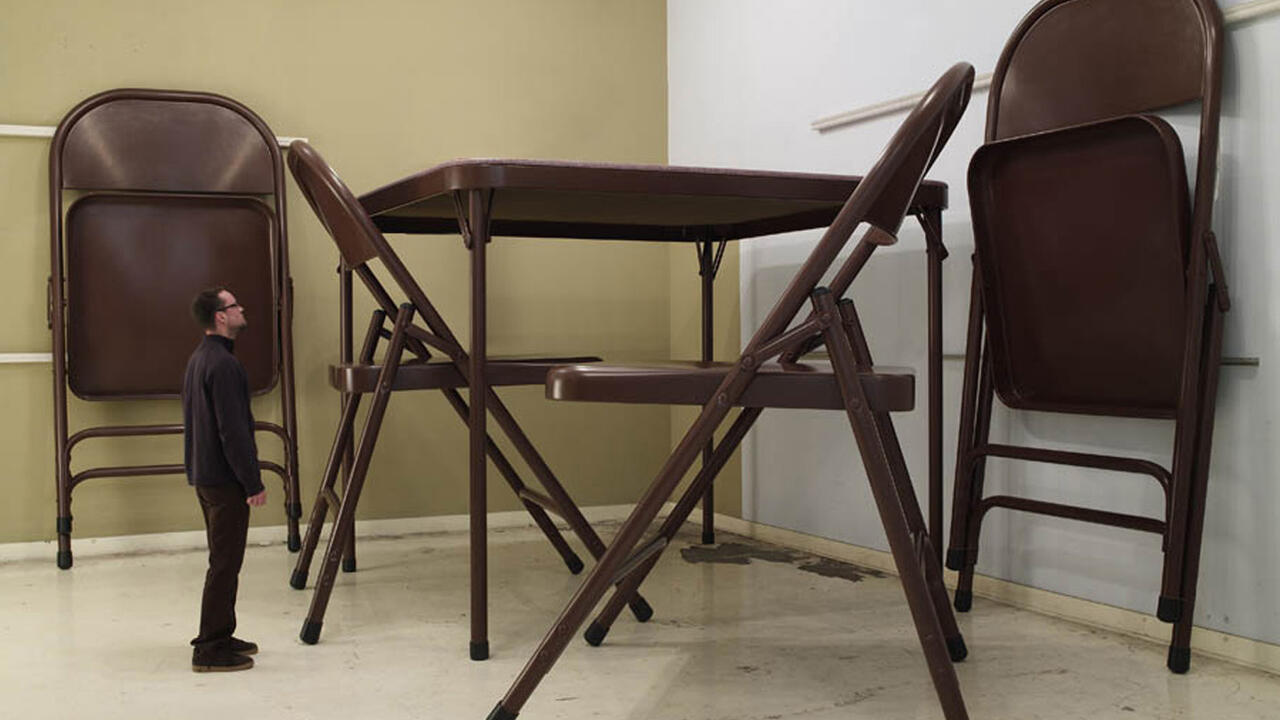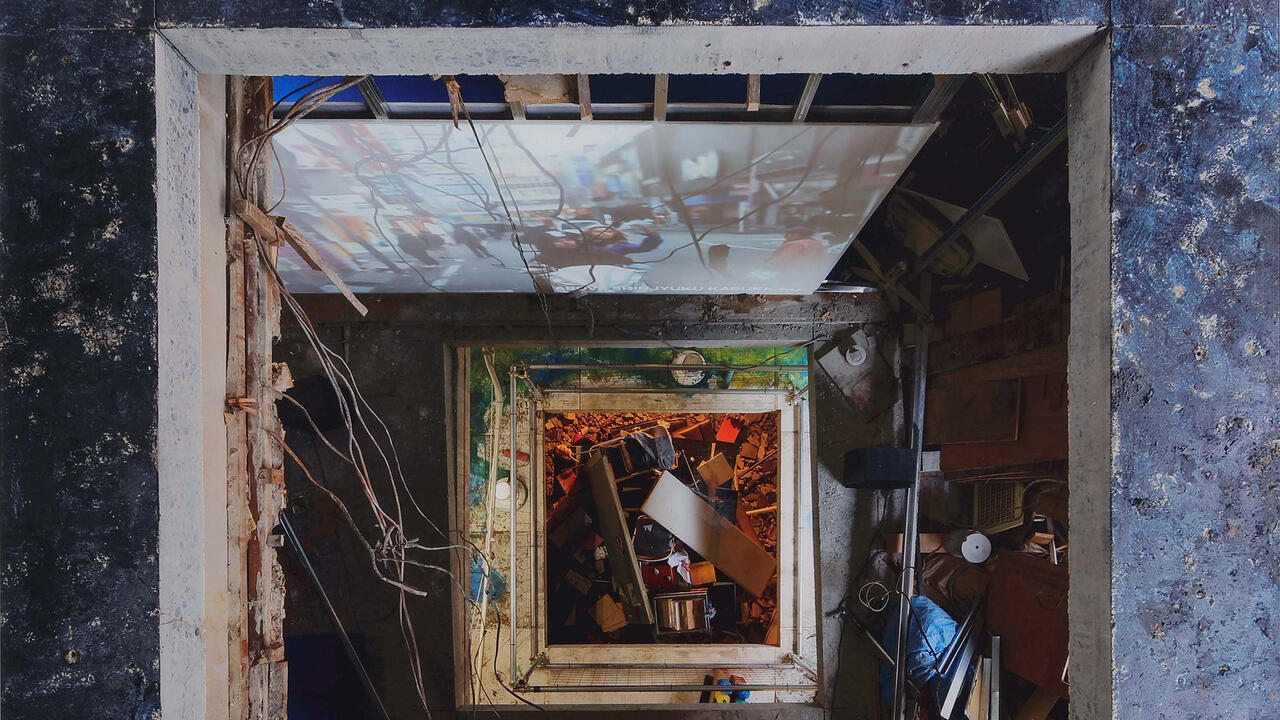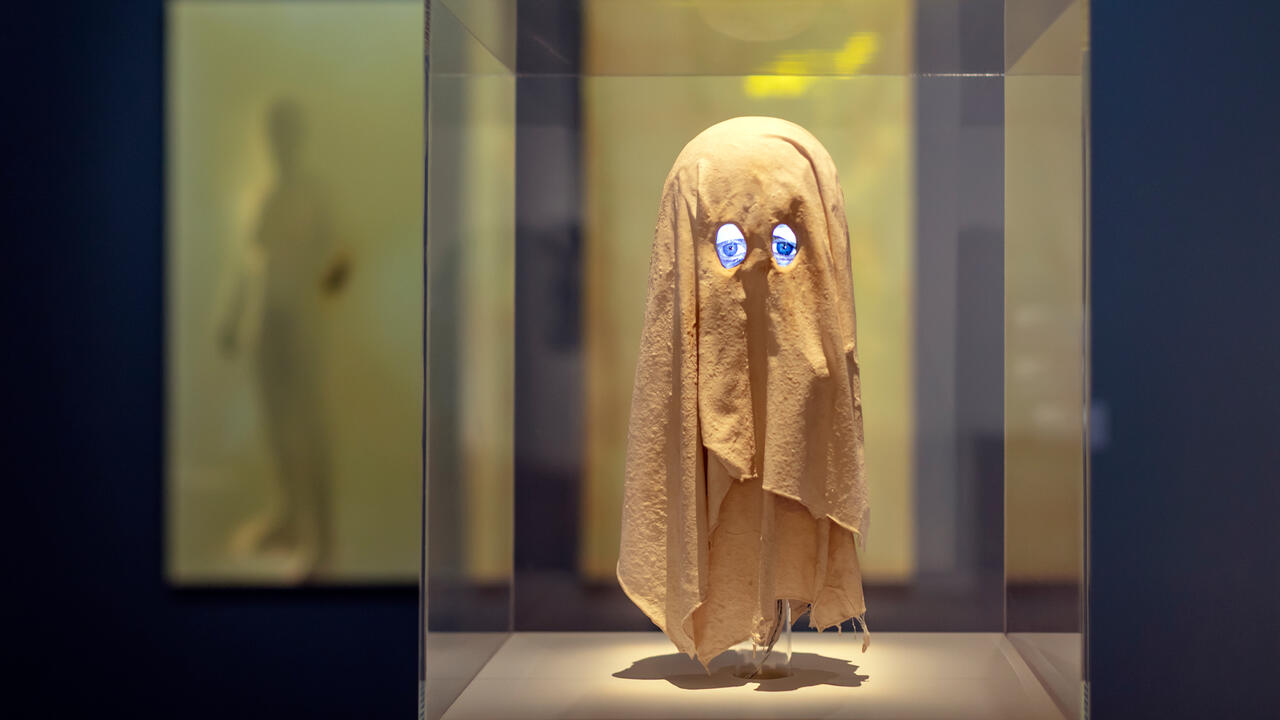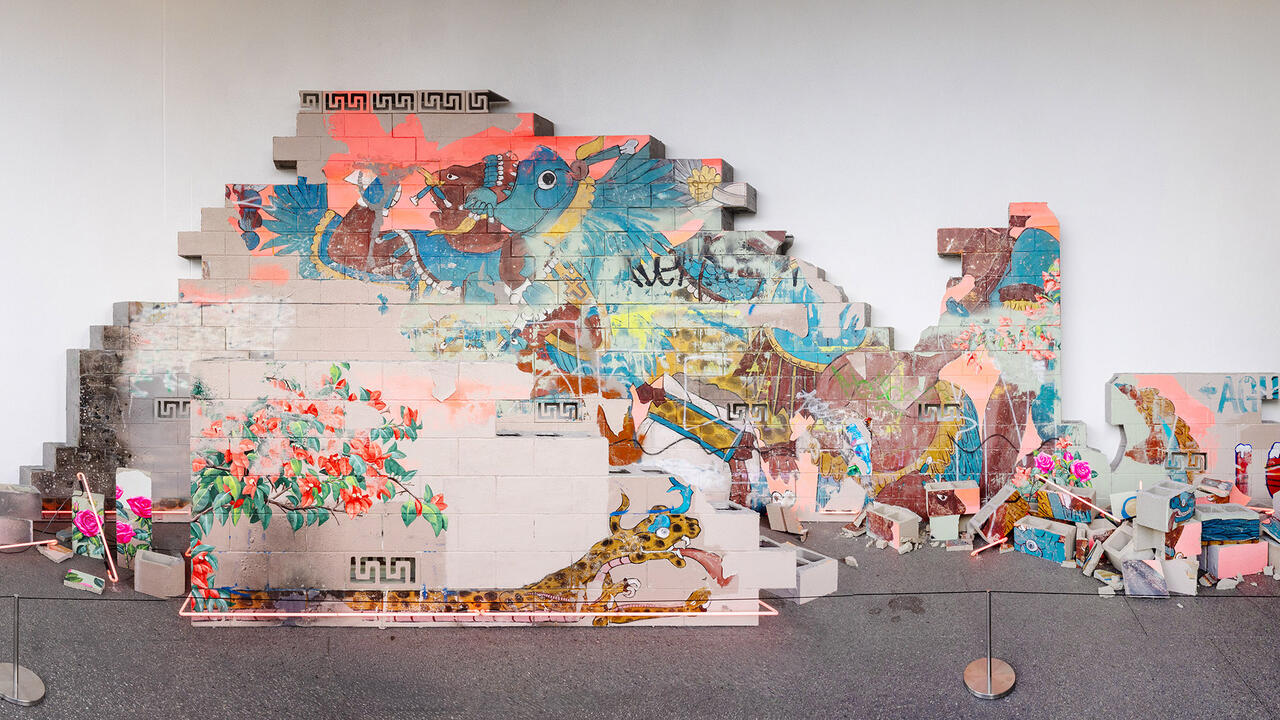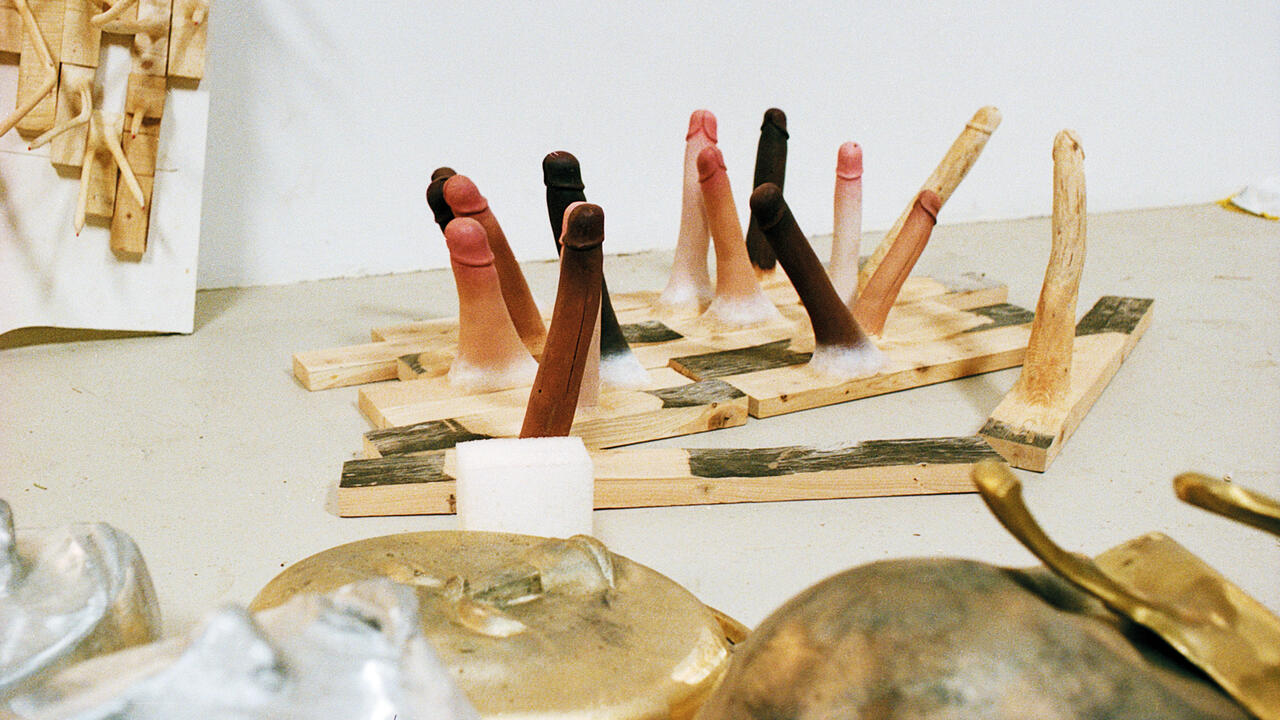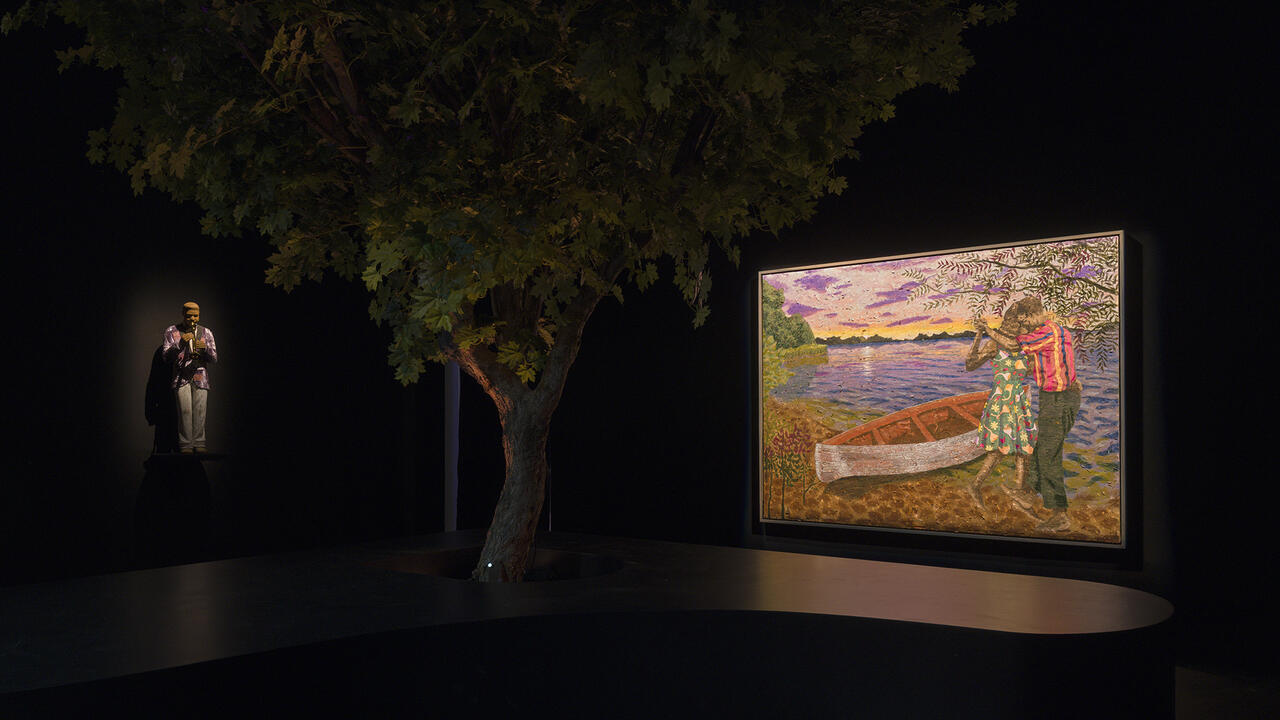The Best Shows to See in Los Angeles during Frieze
From a group show at Beyond the Streets to an exhibition of Amir H. Fallah at the Fowler, here are the best shows to see right now
From a group show at Beyond the Streets to an exhibition of Amir H. Fallah at the Fowler, here are the best shows to see right now

‘Laugh Now, Cry Now’
Beyond the Streets
17 February – 18 March

Few manage to capture the essence of Los Angeles better than those who were raised in the city. Four Los Angeles artists – Andrea Aragon, Andrew Durgin-Barnes, Isaac Escoto and Julissa Aaron – do just that in ‘Laugh Now, Cry Now’, an exhibition offering a raw reflection on the city through painting. Drawing on the long history of oil painting, the four effectively remix canonized genres of art history to reshape our understandings of their native city. Durgin-Barnes, for example, interprets still life painting in Fruit Bowl on 101 (2023), positioning a silver relief bowl residually lit by a helicopter’s scrutinous light near the Hollywood freeway. Airbrush and multimedia artist Aaron evokes iconic images of both the city and migration in METAL MORPHOSIS (2023), adorning a chain link fence with a lustrous glimmer. The butterfly, used in both art and activist circles to represent migration from Mexico to the United States, is updated in a blend of green and purple, featuring two juxtaposed faces marking a balance of joy and grief. Curated by Ozzie Juarez, founder of the artist-run Tlaloc Studios in south central Los Angeles, ‘Laugh Now, Cry Now’ is a raw tableau of the city in all of its endearing paradoxes.
Sula Bermúdez-Silverman
Matthew Brown
11 February – 18 March

Working in sculpture and installation, Sula Bermúdez-Silverman draws from the endless well of objects, raw materials and myths that attach to the history of European colonization in the Americas. In particular, the artist is fascinated by the fantastical imagery that attends the arrival of the Spanish conquistadors on horseback. American academics generally agree that horses were reintroduced to the Americas through colonization, having disappeared from the region during the last Ice Age, while a number of scholars from the Global South assert that indigenous Americans used horses continually. Eurocentric accounts of the first colonial encounters portrayed indigenous peoples as awestruck, perceiving the Spanish man-on-horseback to be one being, a horse-man descended from the ancient Greek ichthyocentaur. Bermúdez-Silverman alludes to this contested mytho-history with cast-glass saddles in multiple colors, symbols of the connection between human and horse. Resin is used throughout the exhibition, in works such as De Monstris (2023) to fossilize canonical images, insects, maize, flowers and chewed gum in frames that are reminiscent of family heirlooms. Bermúdez-Silverman’s fascination with objects of quotidian life – the human, the artificial, the natural and the in-between – gestures to the pervasive legacies of colonialism in our everyday lives in the Americas.
Helen Cammock
Art + Practice
11 February – 5 August

‘I Will Keep My Soul’ is Turner Prize-winner Helen Cammock’s first exhibition in the US. Largely born out of her residency with the Rivers Institute for Contemporary Art & Thought and the Amistad Research Center in New Orleans, this multimedia installation draws on archival materials to reflect on artist Elizabeth Catlett’s struggle for creative autonomy as she realized her 1976 commission for a sculpture of Louis Armstrong in New Orleans’s Armstrong Park. With acute attention to the specificities of place, Cammock portrays New Orleans as a city that is both inherently international and hyper-local, consistently excluded from consideration as a global space and marked by systemic racism and socioeconomic inequality. Underpinning this history are the looming questions of what it means to be an artist, an activist and – above all – free. I Will Keep My Soul (2023) studies daily life in the city through the voices of students, contemporary artists, musicians, rappers and writers, creating a unique vision of New Orleans that is too often excluded from our national imaginary. A gallery of archival materials, posters and children’s and scholarly literature accompany the two-channel video, inviting viewers both to learn about an essential history that may be unfamiliar, and to re-evaluate their understandings of the process of history-making itself.
‘Strings of Desire’
Craft Contemporary
29 January – 7 May
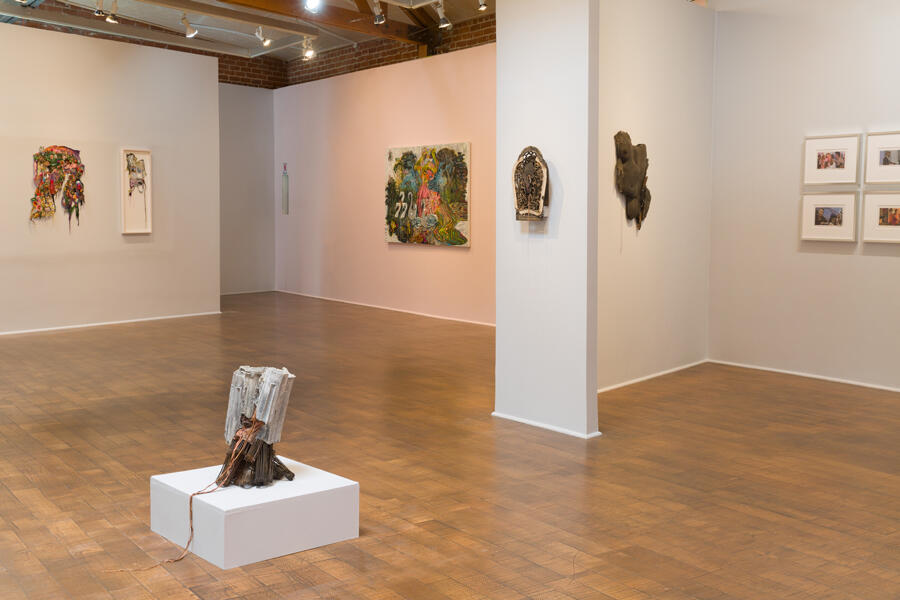
Embroidery takes centre stage in ‘Strings of Desire’, a group show featuring 13 artists, each of whom has embedded their personal history into works that range across pattern, design, painting, sculpture and architecture. As suggested by the exhibition title, at the core of this exploration are the themes of desire and longing: to belong, connect, retrieve memories or expand our understanding of overlooked realities. Kang Seung Lee, for example, combines a three-channel video with two works created with sambe, a woven hemp textile traditionally used in Korean funerary practices, to pay homage to Korean poet Gi Hyeong-do and Chinese-American artist Martin Wong. In Untitled (Put Badly, Gi Hyeong-do) (2022), Lee uses gold thread to embroider Hyeong-do’s poem Put Badly (1989) translated into American Sign Language, which Wong also used in many of his paintings. Born in Vietnam, Diem Chau combines embroidered threads with functional porcelain ware to memorialize her family’s stories of immigration to the United States as refugees in 1986. Such personal connections to the medium also make space for exciting new takes on abstraction, as seen in the work of Mexican-born Miguel Osuna and Chilean-born Carmen Mardónez. Osuna embroidered cotton during regular Zoom calls with his mother who lives in Mexico, allowing them to share time across space, an idea present in his precise linework, while Mardónez chronicles the passage of time through colour, at the same moment problematizing the traditional feminine associations of embroidery with her vibrant shades of pink. A varied body of diasporic histories are woven together in a thought-provoking show that points the way to harmonious futures.
Amir H. Fallah
Fowler Museum at UCLA
29 January – 14 May

Amir H. Fallah turns western portraiture on its head in his first solo Los Angeles museum exhibition. His striking subjects are rendered in vibrant orange skin tones, subtly positioning them outside an artist’s traditional skin colour palette, and complicating the viewer’s assumptions about the racial or ethnic identities of the sitters. The figures themselves are also ambiguously rendered, represented without faces but instead with their heads covered by patterned textiles. A number of these paintings, such as Protector 1 (2022), also feature grid-like structures with patterned geometric lines moving between planes to create a shape that evokes everything from the work of M.C. Escher to Islamic abstract art. Fallah combines markers of his Iranian-American identity to explore ideas of the self along with moral and political concerns. As well as paintings, Fallah makes stained-glass compositions in collaboration with Judson Studios, in which he explores the potential of colour and light. Inquisitive and creative, the artist also explores ways of presenting the self in his steel sculptures that abstract the human form to highlight geometry and pattern. By looking inward, Fallah highlights the porous nature of art as it comes to transcend the borders of geopolitics and culture.
Main image: Jordan Nassar, Green Spring Purple (detail), 2022, hand embroidered cotton on cotton over canvas, 65 × 116 cm. Courtesy: the artist; Anat Ebgi, Los Angeles; James Cohan, New York; and The Third Line, Dubai; photograph: Mason Kuehler










